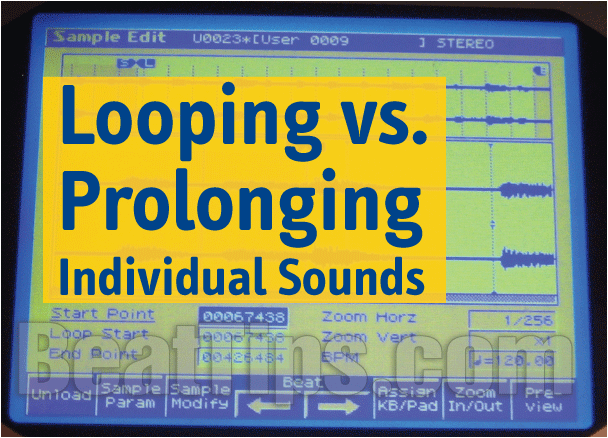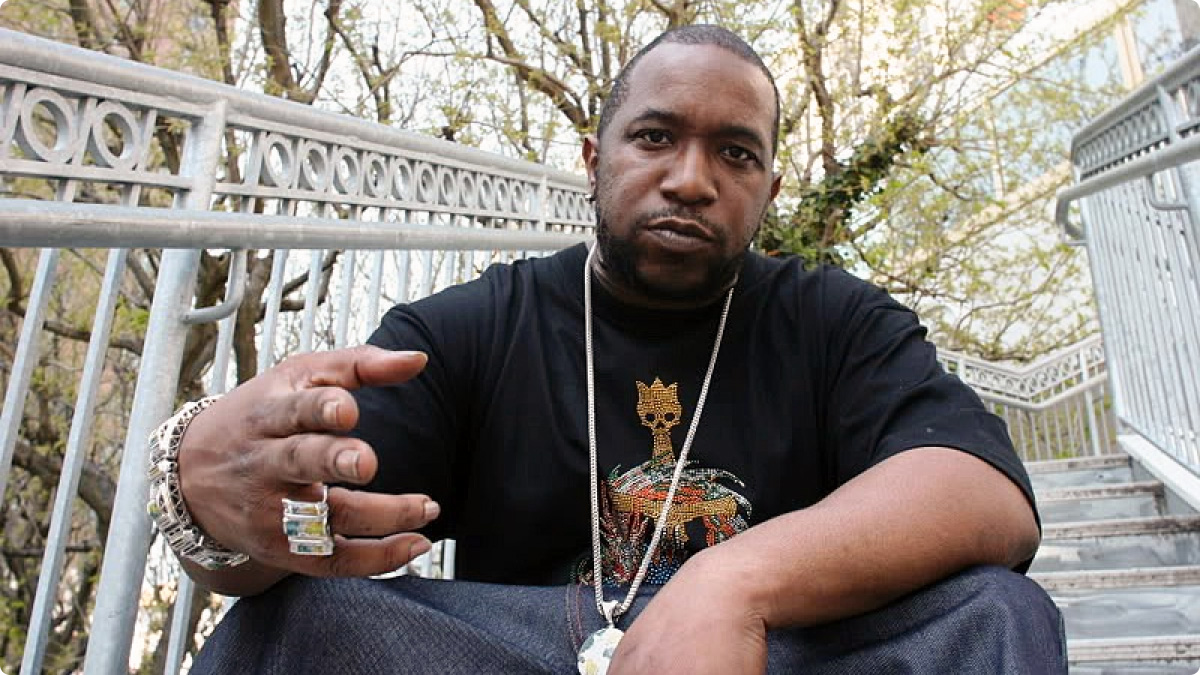Prolonging Sounds May Be the Answer to the Question
By AMIR SAID (SA’ID)

When it comes to modifying individual sounds, there’s one common question: Should you loop individual sounds? Here’s my take: I rarely loop any individual sounds, hits or stabs, other than maybe a snare that I want to give a roll-effect to. Instead, what I do is, I aim to “prolong” sounds by duplicating (copying) them, and then either splicing them together or layering them (programming them) to play either as: (a) slightly overlapping sounds; or (b) as blended (layered) sounds with different beginning/start and end chop points, and with each sound having a different velocity and/or volume level.
When I make beats, there’s two fundamental concepts of arrangement that I may use. For some beats, I try to approach arrangement and structure as closely as possible to how a typical 1970s era groove (soulful rhythm section) would have been arranged. In keeping with that, the only way a sound can be extended and/or looped in a traditional live band setting is through the actual playing and prolonging of the notes (sounds) of particular interest. The other concept of arrangement that I use is more along the lines of a mid-1990s era, up-front drum programming. So for me, when it comes down to it, the looping of individual sounds in beatmaking is actually more about the prolonging of individual sounds, not the looping of them. And, therefore, when I want to prolong or sustain a sound, I opt to use more natural techniques to achieve that effect.
Let me be clear, there isn’t anything particularly wrong with looping individual sounds. But I often find that the looping of individual sounds can often sound more artificial. This can make the overall beat sound unbalanced or overly modified, usually devoid of feeling and a nice swing. Also, for me, I’ve always felt that the looping of an individual sound limits its spacing and “fit” within a beat. That is, once a sound is looped to itself, it’s “sound potential” (what the sound could be) is capped and locked into a burdensome loop. In other words, the loop of the individual sound can cause the sound to stand out throughout the beat in a way that does not necessarily compliment the beat.
For example, let’s say you have a saxophone phrase and you want the last quarter of it to repeat. There’s two ways to do this. One way to do it is, you loop the part of the saxophone that you want to repeat. This gives you the sample with its tail end looped to itself. Consider for a moment how that would sound….
Another way to repeat the last quarter of the sax phrase is to duplicate the original sax, then use the two samples — the original and the duplicate — together. What you do is chop the last quarter from the original sax, then chop the duplicate down to ¾ of its duration, essentially leaving only the last quarter of the original saxophone phrase. At this point, you can play the repeat of the last quarter of the sample—wherever you like in the arrangement, not just at the end of the saxophone phrase, because you’re not locked into the looped version of the sample. Note: By using this method and technique, you play (arrange) each sampled phrase in a way that feels more real and less synthetic, artificial, or contrived.
Still, all of this having been said, there are some occasions where looping an individual sound is helpful. For instance, let’s look at that same hypothetical saxophone phrase. What if you didn’t want to use the entire phrase itself; what if you just wanted to use it to make sax sound-stabs? In that case, chopping the sample down to small stabs and looping them can be helpful, depending, of course, on how you intend to use the stabs. For example, you could loop a sax-stab so that it rumbles, then you could combine that rumbling sax-stab with another sound stab. The possibilities for sound-stabs, from everything to texture to variance to vibe to feel, is endless.
Bottom Line
When deciding upon whether or not to loop an individual sound, always consider the overall feel of the beat that you’re working on. In most cases, duplicate an individual sound first, then combine it with it’s original. This will often put you closer to the sound that you’re going for. But if that doesn’t work, sure, you can also loop the part of the sound that you want to repeat (or give off a chorus effect, etc.)
Also, remember that merely looping the end of a phrase does not necessarily give the feel of the phrase repeating naturally. Think of a guitarist repeating the same riff over and over. Now think of that guitarist prolonging one part of the riff before he returns back to the riff’s beginning. Imagine how this human loop sounds; imagine the feel, nothing artificial! Incidentally, this is a great guide to use when thinking about chopping down lengthy phrases or multi-bar measures.
Finally, as beatmakers, we work in a world of electronic music production, wherein we can program EMPIs (Electronic Music Production Instruments) to do things that a human can’t. In some ways, this is an advantage, in some ways, it’s a disadvantage. Either way, we shouldn’t deliberately sacrifice a human feel and sensibility just because production technology presents us with endless possibilities.
—
The BeatTips Manual by Amir Said (Sa’id).
“The most trusted name in beatmaking.”
